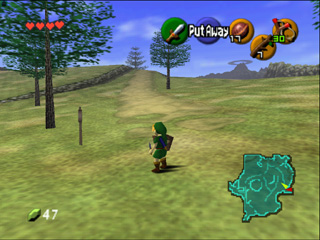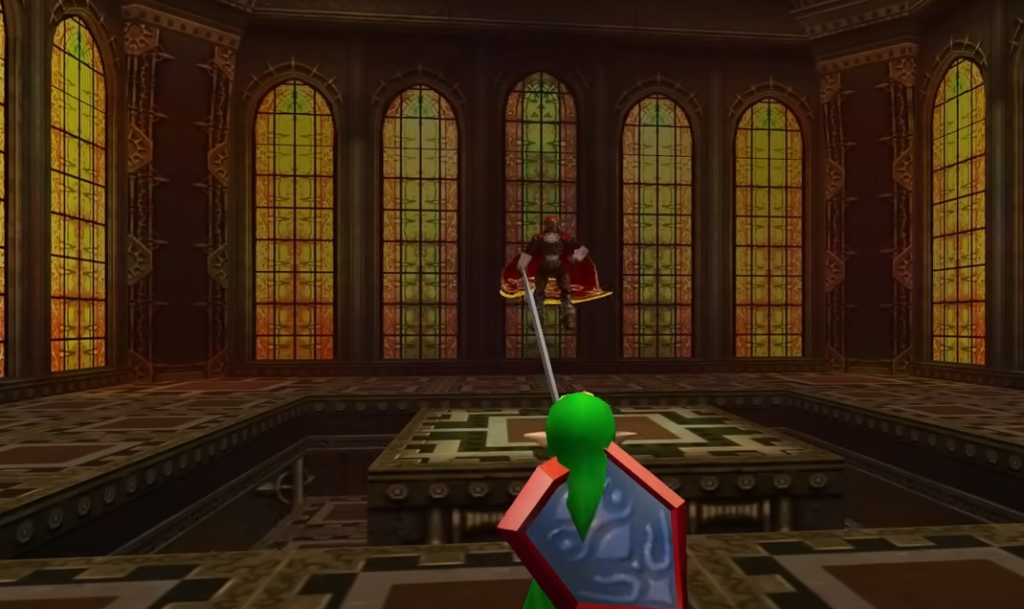The Legend of Zelda: Ocarina of Time is a landmark title in gaming history. Released in 1998 for the Nintendo 64, it brought the iconic Zelda franchise into the 3D era, setting a new gold standard for adventure games. Its innovative mechanics, compelling story, and immersive world continue to inspire developers and captivate players decades later.
Story and Atmosphere
The narrative follows Link, a young boy destined to become the Hero of Time, as he battles the evil Ganondorf to save the land of Hyrule. The story’s simplicity is elevated by its pacing, emotional depth, and sense of discovery. From Link’s humble beginnings in Kokiri Forest to the grandeur of Hyrule Castle and the desolation of a future ruled by darkness, the game masterfully immerses players in its world.
The atmosphere is heightened by Koji Kondo’s unforgettable score. Tracks like “Zelda’s Lullaby,” “Song of Storms,” and “Gerudo Valley” are iconic, blending perfectly with the game’s environments.
Gameplay
At the heart of Ocarina of Time is its gameplay, which seamlessly combines exploration, puzzle-solving, and combat. The introduction of the Z-targeting system was revolutionary, allowing players to lock onto enemies and objects for precise interactions. This mechanic has since become a staple in action-adventure games.
The game’s pacing is nearly perfect. Starting with smaller dungeons like the Deku Tree and gradually escalating to complex, multi-layered challenges like the Water Temple and Spirit Temple, each dungeon introduces new mechanics and items that keep the gameplay fresh.
Combat feels engaging, with a mix of swordplay, ranged attacks, and item-based strategies. Iconic weapons like the Hookshot and Bow are not just tools for progression but also keys to uncovering secrets.
Graphics and Presentation
For its time, Ocarina of Time was visually stunning. Its 3D models and expansive environments pushed the Nintendo 64’s hardware to its limits. While modern players may find the graphics dated, the art direction—rich with vibrant colors and imaginative designs—retains its charm.
The transitions between child and adult Link add a unique dynamic, showcasing Hyrule’s transformation over time. Seeing the cheerful, bustling market turn into a ghostly wasteland after Ganondorf’s rise is a moment that sticks with players.

Legacy
Ocarina of Time wasn’t just a game; it was a revolution. It laid the groundwork for future open-world adventures and RPGs, with its influence evident in games like Elder Scrolls, Dark Souls, and Breath of the Wild. The Water Temple, often debated for its difficulty, became a cultural touchstone in gaming discussions.
Despite its age, Ocarina of Time remains as engaging as ever, with re-releases on multiple platforms allowing new generations to experience its magic.

Verdict
The Legend of Zelda: Ocarina of Time is an undeniable masterpiece. Its groundbreaking mechanics, immersive storytelling, and unforgettable world make it a must-play for any gamer. Even in an industry filled with technological advancements, it stands tall as a timeless classic.
Score: 10/10
Other relevant posts:
- Mischief Makers – A Shake-Up on the N64
- Conker’s Bad Fur Day: The N64’s Foul-Mouthed Masterpiece
- Banjo-Kazooie – A Magical Adventure
- Spyro the Dragon – A Treasure Worth Collecting
- Star Fox 64 – A Space Odyssey
